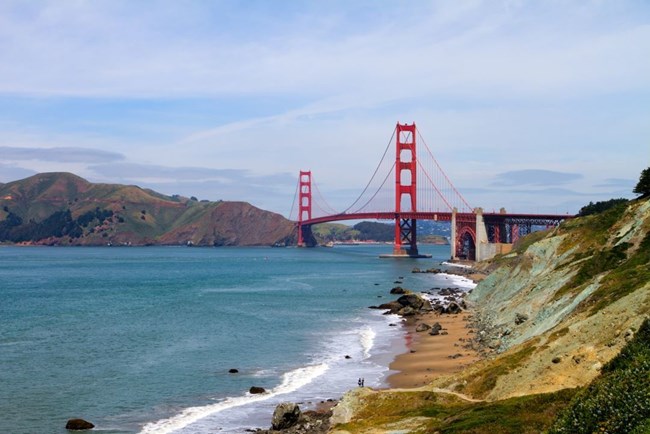Learn about NRCAs
The Natural Resource Condition Assessment (NRCA) Program provides framework, funding, and publishing support to parks to aid in the synthesis and documentation of natural resource conditions. Condition assessment reports are a tool to describe selected park resources, and record a snapshot of their current condition, identify trends, and identify potential or current threats and stressors. Understanding the condition and trend of natural resources is key for parks and NPS planners to appropriately prioritize and allocate stewardship resources.

NPS photo
The park is rich in natural resources, including 19 types of ecosystems in numerous distinct watersheds. The park provides habitat for many sensitive, rare, threatened, and endangered species, including the mission blue butterfly, northern spotted owl, and California red-legged frog. Golden Gate National Recreation Area also has an abundance of historical and cultural assets, including sites such as early fortifications on Alcatraz Island, Forts Cronkhite and Barry in the Marin Headlands, Fort Mason, Fort Point, and the Presidio of San Francisco.
Traditional NRCA Report: 2019
In order to better understand the natural resources present in this recreation area, a Natural Resource Condition Assessment was written and published in 2019. Researchers from the University of California, Berkeley and Golden Gate National Recreation Area staff worked together to identify resources of greatest concern, using existing data and literature. A final list of eight resource topics were evaluated:
- Amphibians |
||
- Breeding landbird diversity |
||
- Forests |
||
- Invasive plants |
||
- Landscape context |
||
- Rare plants |
||
- Salmonids/steelhead |
||
- Shorebirds |
Three resources were determined to be in good condition: amphibians, breeding landbird diversity, and rare plants; four resources were rated as moderate concern: forests, landscape context, steelhead, and shorebirds – the latter two also had declining trends; and one resource was rated as significant concern: invasive plants. Based on this assessment, Golden Gate National Recreation Area is generally in moderate or good condition. Golden Gate National Recreation Area faces some significant challenges in the coming decades, including climate change, exotic pests and pathogens, habitat loss, and the encroachment of invasive plant species. In addition, although the recreation area staff have gathered a considerable amount of information regarding natural resources, there are still many significant gaps in the existing data for natural resources and stressors. NPS resource managers will need to establish and continue comprehensive monitoring projects in order to ensure that management strategies can be implemented in a timely and effective manner to protect valuable natural resources.
For other reports and natural resource datasets visit the NPS Data Store.
Source: NPS DataStore Collection 7765 (results presented are a subset). To search for additional information, visit the NPS DataStore.
Last updated: August 15, 2022
